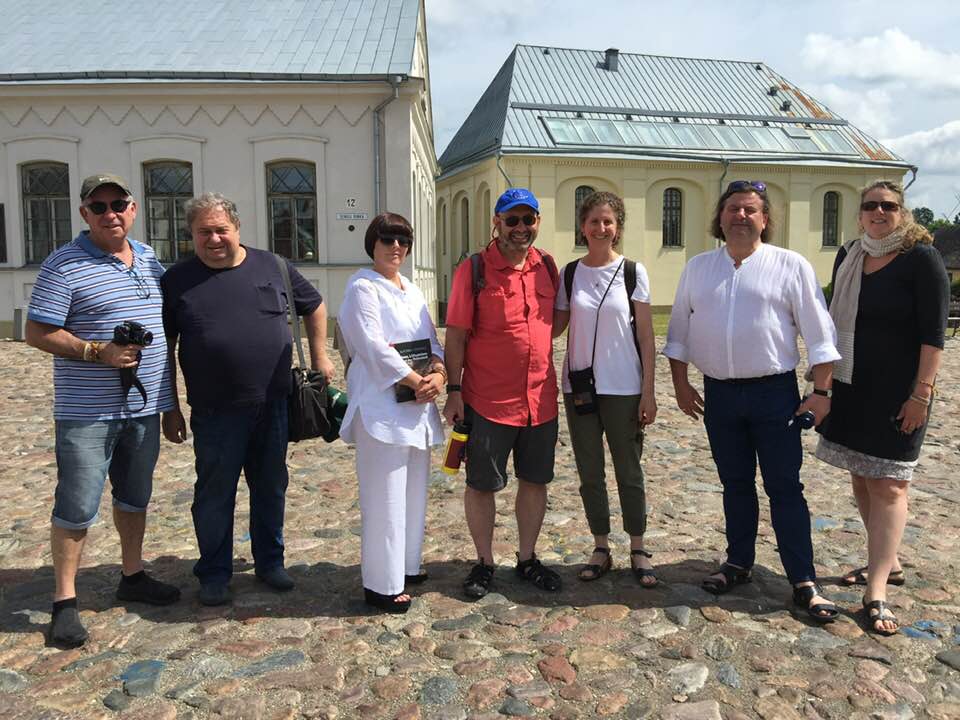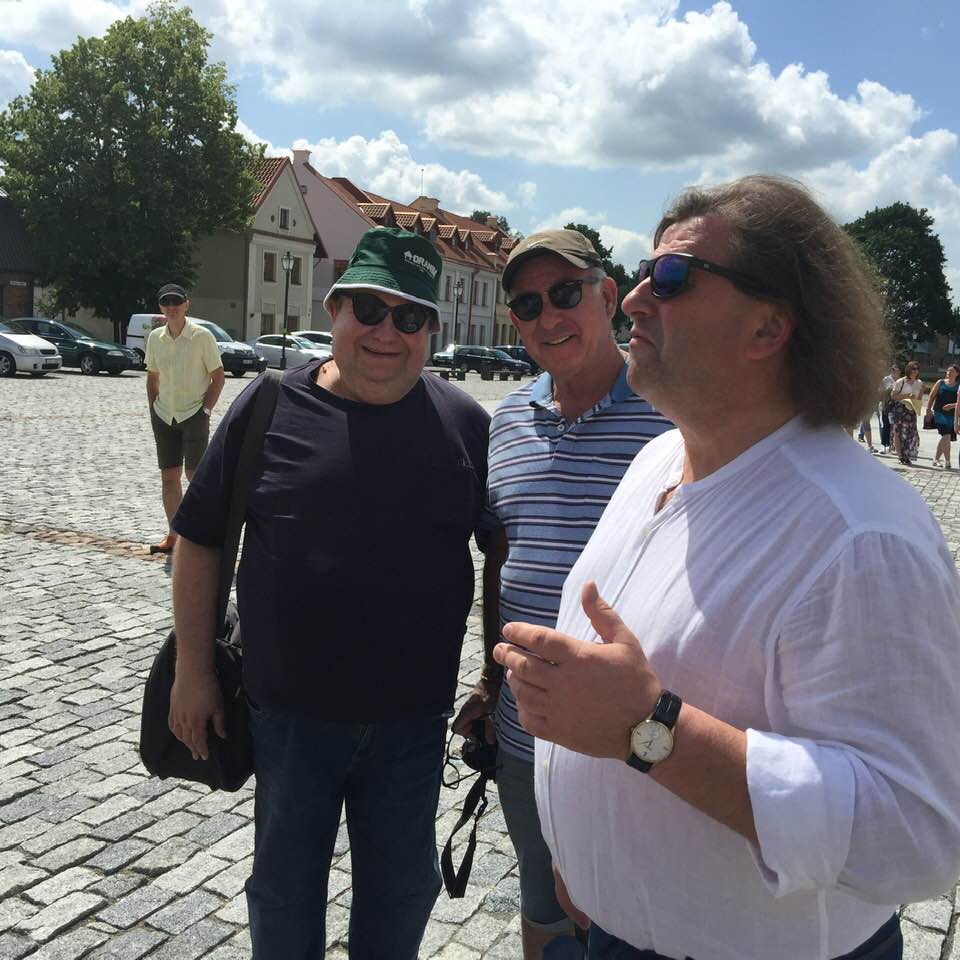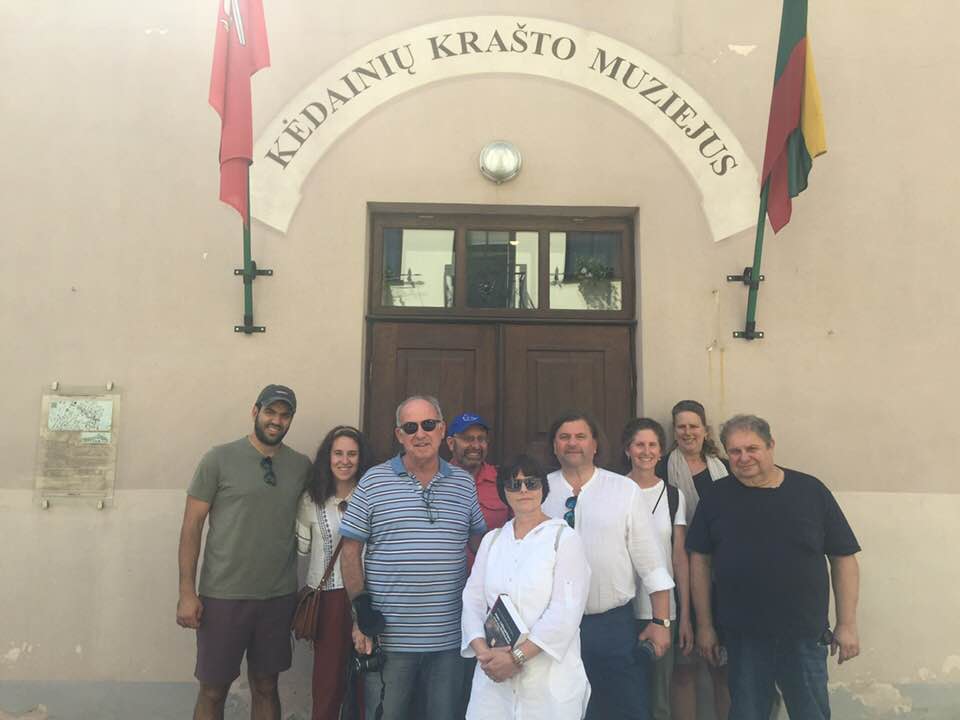Lithuania
Hotel View – we were the only guests!
The ghetto area
Birzai Castle
The Holocaust site
Lithuania
Hotel View – we were the only guests!
The ghetto area
Birzai Castle
The Holocaust site
Jill’s ancestral home in Lithuania
The Old Cemetery
16 July 2023


With Laima Ardaviciene and Harry Gorfine






Harry & Laima doing maintenance













Update on opening of Lost Shetl: now in Summer 2024






















































































On the road to Krakes

Krakes Cemetery













Meeting with Robertas Dubinka – Education Director and Daiva Dubinkienė, teacher.



Discussing In My Pocket Project.

https://elirab.au/project-update/





















Back in Josvainiai for dinner





Earlier blogs:

Greeting fall with the libraryOn September 23, the City-Municipal Public Library in Nasielsko began a series of library lessons about autumn. On the first day of the autumn calendar, class 3 a came to us with the teacher Mrs. Justyna Jankowska from Primary School No. 1 in Nasielsko. At the beginning of the meeting, we talked about the first signs of fall and changes happening in nature. Children also learned about how animals are preparing for fall and which ones are stocking up for winter. We also talked a lot about birds, those that fly away from us, those that stay with us for the winter, and those bird species that fly into our country to spend the winter with us. Students also learned the concepts: golden polish autumn, mushrooming and migratory birds.During a library lesson, the librarian ladies read a poem titled to children. ′′ Babie summer ′′ by W ładadys ław Broniewski, Maria Konopnicka’s ′′ Autumn ′′ by J ózef Chechowicz, Dorota Gellner’s ′′ Autumn walk ′′ and also ′′ About Helena Bechlerowa’s hedge and chestnuts Next, it was time for puzzles and movement games in mimicking animals and atmospheric phenomena, which often accompany Polish golden autumn. Then our nice guests took part in the natural knowledge tournament. The answers to the questions asked didn’t give children much trouble. Each participant received a colorful lesson plan as a reward.At the end of the meeting, students received an electronic library card, which turned out to be quite an attraction for them. We hope that with the books they rented that day, the autumn s’ rage, short and cloudy days will be warmer and happier.
Source: www.biblioteka.nasielsk.pl/
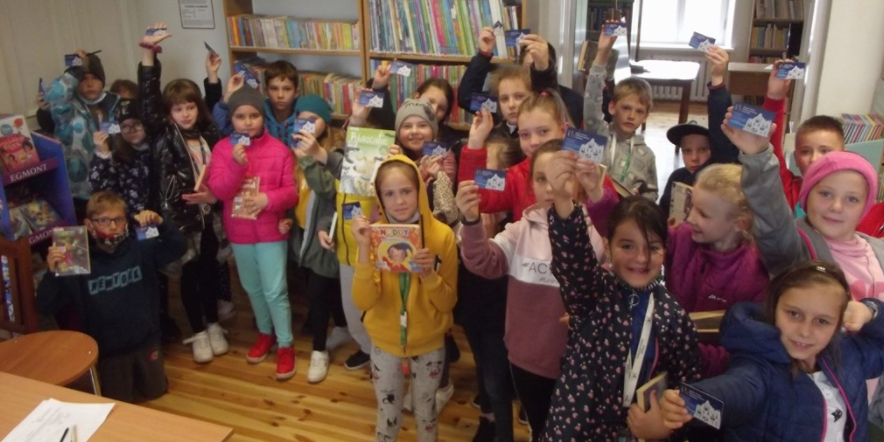


Nasielsk KehilaLink
Author: Wojciech Konończuk — political scientist and historian, deputy director of the Centre for Eastern Studies in Warsaw; specializes in problems of contemporary Eastern European countries, the history of Jews in the Russian Empire and the Second Polish Republic, and deportations of Polish citizens to Siberia during the Second World War. Contact: wojtekk7@wp.pl
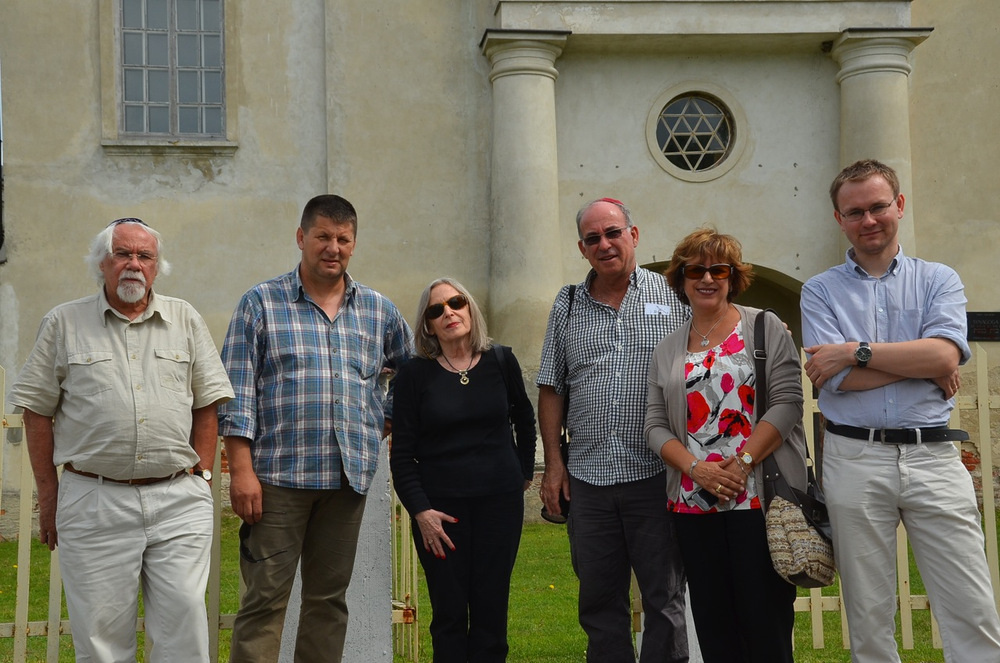
English Translation (Google)
Page 7
605
“They show the highest tendency to emigrate” thousands of other migrants from Lithuania. According to the census of 1911, 47 thousand Jews lived in South Africa, many of whom were Lithuanians, although there were also Jews from Podlasie.

An example is Nachum Mendel Skaryszewski from Orla, who first emigrated to Palestine, from where in 1911 he moved to South Africa. After a few years, he was joined by his brother, sister and several other residents of his native shtetl (20) .
Migration level of Jews was so significant that already in 1895, there were voices calling until the border is closed to them, and South Africa playfully was called the “colony of Lithuania” 21 .
Relatively little popularity before the outbreak of World War I, Palestine, which was part of the Ottoman Empire, enjoyed this manski, where in the first (1882-1903) and second (1904-1914) aliji came over 40 thousand. Russian Jews, including 23,000 in years 1905–1914 22 . They came mainly from the Ukrainian lands, in the most more affected by pogroms at the beginning of the 20th century. Funds from numerous Zionist organizations were gathered to buy land in Palestine, and one of the largest was founded in 1912. Białystok Society Land purchase, supporting the departures of Białystok Jews 23 . As it follows, according to the findings of Gur Alroey, emigration to Palestine was caused by not only the idea of Zionism, but this area was also seen as a potential attractive place to live, and thus the reasons for emigration did not differ from those related to going to the USA 24 . Interesting there is also the level of returns from Palestine, possibly emigration from there to the US or another country was very high and in the period before at the outbreak of World War I, it ranged from 50 to 75 percent. 25 It was from a difficult climate, poverty, limited possibilities of finding work, relative proximity to the migrants’ place of origin, but also disenchantment with Zionism 26 .
20 E. Rabinowitz, Personal Journeys. From One Photograph to Journeys of Research and Discovery , Avotayline Online, August 31, 2016, http://avotaynuonline.com/2016/08/from-one-photograph-to-journeys-of-research-and-discovery (access: February 17, 2020).
21 A. Żukowski, Konsekwencje , p. 128; HR Diner, Roads Taken , p. 36.
22 G. Alroey, An Unpromising Land , p. 110.
23 R. Kobrin, Żydowski Białystok and its diaspora , Sejny – Białystok 2014, pp. 67–68.
24 G. Alroey, An Unpromising Land , pp. 61, 233.
25 Ibid, pp. 211-217, 236.
610
Wojciech Konończuk
Table 2. Emigration of inhabitants of Bielsko and Orla to the USA in the years 1885–1914

It should be emphasized that the above calculations do not give the full picture Jewish emigration from both localities, and only provide information about confirmed newcomers to the United States. Uses- the scanned numbers are certainly far from complete for several reasons.
Firstly, as already mentioned, in relation to some of the migration documents, However, the record of a person’s place of origin is unclear or it was written distorted. Thus, it made it impossible the identification of all emigrants from both places.
Secondly, the data included in the table do not include migration from Bielsko and Orla to other countries, which – if data for departures of Jews from the Empire are accepted Russian – was 22 percent. -all migrants.
We have source confirmation of emigration in both surveyed towns Jews living there to Argentina, South Africa and Palestine 43 .
Third, many Jews from smaller towns were leaving, the most first to larger cities, then emigrate from there abroad nothing. As a result, American migration statistics often show their whereabouts, not of origin, appeared. In case of Bielsko and Orla, such a natural center was Białystok 44, 50 km away .
43 For example: in 1905, Aryeh Levin from Orla (1885-1969) emigrated to Palestine, in later years a famous rabbi and teacher; in 1907, Bielski left for Argentina Jew Dawid Abraham Gail (R. Gail, The Gail Family. From Bielsko to Argentina and the USA , “Bielski Hostineć “2019, 2, pp. 63–64);
in 1911 the above-mentioned Nachum Mendel Skaryszewski, and shortly after him, several other Orla residents emigrated to South Africa (E. Rabinowitz, op. Cit.).
Rabinowitz Eli, Personal Journeys. From One Photograph to Journeys of Research and Disco- very, Avotayline Online, 31 VIII 2016, http://avotaynuonline.com/2016/08/ from-one-photograph-to-journeys-of-research-and-discovery (dostęp: 17 II 2020).

This story is divided into: A Tragic Romance (From One Photograph to Journeys of Research & Discovery) and Finding Mr Katz Finding Mr Katz by Eli Rabinowitz Finding Mr Katz is an importa…
Source: elirab.me/litvak-portal/a-tragic-romance/
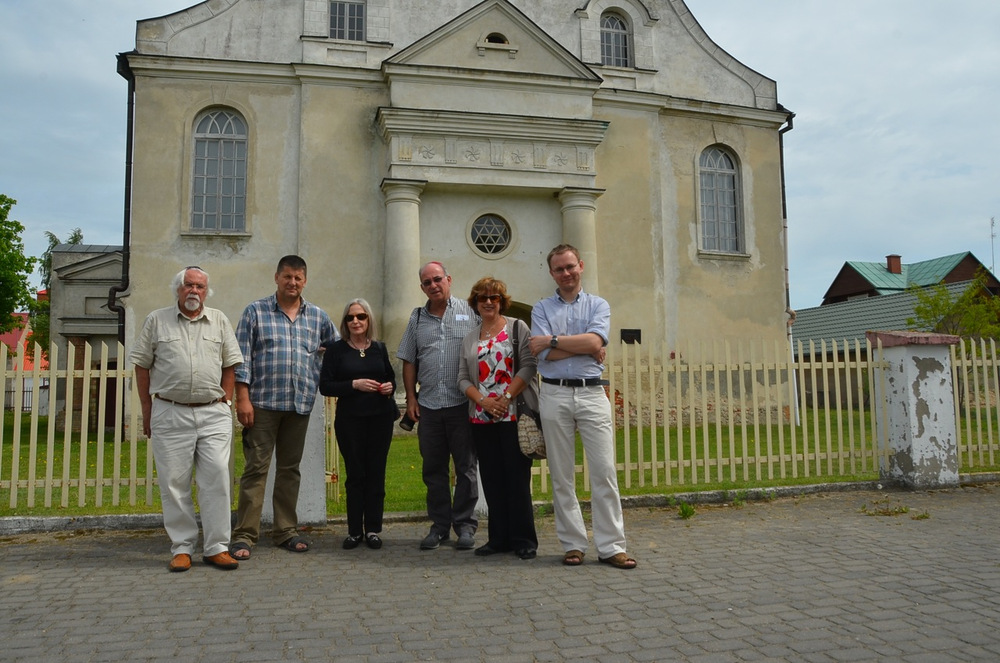
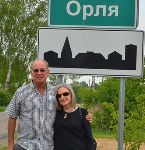
Contact: eli@elirab.com
Author: Wojciech Konończuk — political scientist and historian, deputy director of the Centre for Eastern Studies in Warsaw; specializes in problems of contemporary Eastern European countries, the history of Jews in the Russian Empire and the Second Polish Republic, and deportations of Polish citizens to Siberia during the Second World War. Contact: wojtekk7@wp.pl

English Translation (Google)
Page 7
605
“They show the highest tendency to emigrate” thousands of other migrants from Lithuania. According to the census of 1911, 47 thousand Jews lived in South Africa, many of whom were Lithuanians, although there were also Jews from Podlasie.

An example is Nachum Mendel Skaryszewski from Orla, who first emigrated to Palestine, from where in 1911 he moved to South Africa. After a few years, he was joined by his brother, sister and several other residents of his native shtetl (20) .
Migration level of Jews was so significant that already in 1895, there were voices calling until the border is closed to them, and South Africa playfully was called the “colony of Lithuania” 21 .
Relatively little popularity before the outbreak of World War I, Palestine, which was part of the Ottoman Empire, enjoyed this manski, where in the first (1882-1903) and second (1904-1914) aliji came over 40 thousand. Russian Jews, including 23,000 in years 1905–1914 22 . They came mainly from the Ukrainian lands, in the most more affected by pogroms at the beginning of the 20th century. Funds from numerous Zionist organizations were gathered to buy land in Palestine, and one of the largest was founded in 1912. Białystok Society Land purchase, supporting the departures of Białystok Jews 23 . As it follows, according to the findings of Gur Alroey, emigration to Palestine was caused by not only the idea of Zionism, but this area was also seen as a potential attractive place to live, and thus the reasons for emigration did not differ from those related to going to the USA 24 . Interesting there is also the level of returns from Palestine, possibly emigration from there to the US or another country was very high and in the period before at the outbreak of World War I, it ranged from 50 to 75 percent. 25 It was from a difficult climate, poverty, limited possibilities of finding work, relative proximity to the migrants’ place of origin, but also disenchantment with Zionism 26 .
20 E. Rabinowitz, Personal Journeys. From One Photograph to Journeys of Research and Discovery , Avotayline Online, August 31, 2016, http://avotaynuonline.com/2016/08/from-one-photograph-to-journeys-of-research-and-discovery (access: February 17, 2020).
21 A. Żukowski, Konsekwencje , p. 128; HR Diner, Roads Taken , p. 36.
22 G. Alroey, An Unpromising Land , p. 110.
23 R. Kobrin, Żydowski Białystok and its diaspora , Sejny – Białystok 2014, pp. 67–68.
24 G. Alroey, An Unpromising Land , pp. 61, 233.
25 Ibid, pp. 211-217, 236.
610
Wojciech Konończuk
Table 2. Emigration of inhabitants of Bielsko and Orla to the USA in the years 1885–1914

It should be emphasized that the above calculations do not give the full picture Jewish emigration from both localities, and only provide information about confirmed newcomers to the United States. Uses- the scanned numbers are certainly far from complete for several reasons.
Firstly, as already mentioned, in relation to some of the migration documents, However, the record of a person’s place of origin is unclear or it was written distorted. Thus, it made it impossible the identification of all emigrants from both places.
Secondly, the data included in the table do not include migration from Bielsko and Orla to other countries, which – if data for departures of Jews from the Empire are accepted Russian – was 22 percent. -all migrants.
We have source confirmation of emigration in both surveyed towns Jews living there to Argentina, South Africa and Palestine 43 .
Third, many Jews from smaller towns were leaving, the most first to larger cities, then emigrate from there abroad nothing. As a result, American migration statistics often show their whereabouts, not of origin, appeared. In case of Bielsko and Orla, such a natural center was Białystok 44, 50 km away .
43 For example: in 1905, Aryeh Levin from Orla (1885-1969) emigrated to Palestine, in later years a famous rabbi and teacher; in 1907, Bielski left for Argentina Jew Dawid Abraham Gail (R. Gail, The Gail Family. From Bielsko to Argentina and the USA , “Bielski Hostineć “2019, 2, pp. 63–64);
in 1911 the above-mentioned Nachum Mendel Skaryszewski, and shortly after him, several other Orla residents emigrated to South Africa (E. Rabinowitz, op. Cit.).
Rabinowitz Eli, Personal Journeys. From One Photograph to Journeys of Research and Disco- very, Avotayline Online, 31 VIII 2016, http://avotaynuonline.com/2016/08/ from-one-photograph-to-journeys-of-research-and-discovery (dostęp: 17 II 2020).

This story is divided into: A Tragic Romance (From One Photograph to Journeys of Research & Discovery) and Finding Mr Katz Finding Mr Katz by Eli Rabinowitz Finding Mr Katz is an importa…
Source: elirab.me/litvak-portal/a-tragic-romance/


Contact: eli@elirab.com
 Online Jewish genealogy resources to be focus of Jewish Genealogical Society talk on 23 May 2021
Online Jewish genealogy resources to be focus of Jewish Genealogical Society talk on 23 May 2021
Online Jewish genealogy resources to be focus of Jewish Genealogical Society talk on 23 May 2021
Eli Rabinowitz, a board member of the IAJGS who lives in Australia and is from South Africa, will speak on “Journeys from Shtetl to Shtetl” for the Sunday, 23 May 2021, virtual meeting of the Jewish Genealogical Society of Illinois. His live streaming presentation will begin at a special time: 7:30 pm CST.
8:30 pm ES 5:30 pm WST
Monday 24 May 2021: 10:30 am Sydney, 8:30 am Perth, 3:30 am Israel, 2:30 am South Africa, 1:30 am UK
Registration https://jgsi.org/event-3988686
After you register, you will be sent a link to join the meeting. This webinar will be recorded so that JGSI’s paid members who are unable to view it live will be able to view the recording later.
For more information, see https://jgsi.org or phone 312-666-0100.

In his presentation, Rabinowitz will explain how to trace our past and plot our future, using 88 KehilaLinks, over 800 WordPress blog entries, Facebook posts, and other social media. He will also discuss heritage travels in the actual and virtual worlds.
In his talk, Eli will describe special events including commemorations and reunions of descendants. “An important activity is to visit a local school—either physically or online, to engage with students, especially in towns where a few buildings with Jewish symbols, or cemeteries that often contain illegible matsevot, are the only tangible memories of a once thriving community,” he said.
It is also important that family histories should be documented and shared at the same time as the special events, Eli said.
Examples of such recent ceremonies were the Bielski partisans’ descendants’ reunion in Naliboki and Navahrudak, Belarus; the new memorial for victims of the massacre that took place near Birzai, Lithuania; and the groundbreaking ceremony for the Lost Shtetl Museum in Šeduva, Lithuania.

Eli Rabinowitz was born in Cape Town, South Africa, and has lived in Perth, Australia, since 1986. He has researched his family’s genealogy and associated Jewish cultural history for over 30 years. Eli has travelled extensively, writing about Jewish life, travel, and education on his website, Tangential Travel and Jewish Life (http://elirab.me). He writes and manages dozens of JewishGen KehilaLinks and more than 750 WordPress blog posts. His articles have appeared in numerous publications, including Avotaynu: The International Review of Jewish Genealogy. Eli has lectured internationally at educational institutions, commemorative events, at IAJGS and other conferences, and online.
He is a board member of the IAJGS—The International Association of Jewish Genealogical Societies, an independent non-profit umbrella organization that coordinates an annual conference of 84 Jewish genealogical societies worldwide.
Eli also advises on Litvak and Polish heritage tours.
He writes and manages 88 KehilaLinks—Jewish websites for JewishGen.org, the world’s largest Jewish genealogical organization, with a database of 500,000 followers. His KehilaLinks include sites in Poland, Lithuania, Latvia, Estonia, Belarus, Germany, Russia, China, Mauritius, Mozambique, South Africa and Australia.
The Jewish Genealogical Societyof Illinois is a non-profit organization dedicated to helping members collect, preserve, and perpetuate the records and history of their ancestors. JGSI is a resource for the worldwide Jewish community to research their Chicago-area roots. The JGSI motto is “Members Helping Members Since 1981.” The group has more than 300 members and is affiliated with the International Association of Jewish Genealogical Societies.
JGSI members have access to useful and informative online family history research resources, including a members’ forum, more than 65 video recordings of past speakers’ presentations, monthly JGSI E-News, quarterly Morasha JGSI newsletter, and much more. Members as well as non-members can look for their ancestors on the free searchable JGSI Jewish Chicago Database.

New Memorial Orla Poland 2021
Plunge, Lithuania



Source: en.wikipedia.org/wiki/Ronald_Harwood




More artwork to follow….
Abel Levitt on the passing of Sir Ronald Harwood from natural causes at his home in Sussex on 8 September 2020, at age 85.
Abel:
I would like to write specifically about Ronald’s connection to Plungyan in Lithuania and his visit there with his wife Natasha in 2005.
I grew up with Ronnie Horwitz. We started school at the Kings Road Primary School in 1941, in the same class of sub A. We completed our schooling at Sea Point Boys’ High in 1951. Throughout our school lives we were in the same class, at Kings Road, at Sea Point Junior and at Sea Point Boys’ High. We lived close to one another, Ronnie in Victoria Road Bantry Bay, and, I, 150 yards away in Brompton Avenue. We were in the Cubs and Scouts together at the 10th Green and Sea Point, We played tennis together, watched cricket at Newlands together, competed with one another at the Eisteddfods.
At school, Ronnie took the lead in the school plays. He was outstanding. After we had finished writing our matric exams, Ronnie left for London, to study Dramatic Art, dropped out of the Royal Academy due to financial difficulties, and the rest, as they say, is history. A career of writing and leadership. We maintained a loose relationship, the occasional phone call when I was in London, but we did spend a day together after watching his acclaimed play “Taking Sides”.
It was whilst reading his novel “HOME” that I learned for the first time that Ronald’s father Isaac Horwitz had emigrated from Lithuania. In half a lifetime, our fathers’ ancestry was not a subject of discussion. Glenda and my journey to Lithuania had already began, when I read Ronnie’s book “Home” and discovered that both of our fathers were from Plungyan. I called Ronnie. “What about you and Natasha joining us in a trip to our shtetl Plungyan” I asked. The reply was immediate. And the date 25th May agreed upon, with our guide Regina to be our leader.
The meeting at the airport was emotional. Ronnie had recently been awarded the Oscar for writing the screenplay of what was to become a Holocaust Classic “The Pianist”. And here he was, with his dear wife Natasha, in Lithuania.
Our journey to Plungyan was via Kovno where we visited Eugenijus Bunka, the son of the “Last Jew in Plungyan”, and our friend and partner in our Plungyan ventures. Eugenijus was in hospital, recovering from an operation. He would not be with us on the upcoming welcome to the Oscar winner.
Upon our arrival in the town our first stop was at the apartment of Yacovas Bunka. During the few years of Lithuanian independence from the Soviet occupation, Yacovas Bunka had welcomed some hundreds of Plungyaner Jews. Few would have been of the international stature of the writer, playwright, literary giant and Oscar winner as Ronald Harwood. There was an immediate warm relationship although Bunka spoke no English and Ronald did not understand Yiddish.
The following morning we proceeded to the mass graves, where 1800 Plungyan Jews had been murdered by the Germans and their Lithuanian Collaborators in July 1941. The mass graves in Plungyan are special .The acclaimed sculptor Bunka, together with his Lithuanian sculptor friends had carved the sculptures which stand as sentinels overlooking the mass graves. These mass graves in the Kausenai Forest have been described by some as the most impressive in the whole of Eastern Europe. Ronald did not have family who had remained in Lithuania, but he walked around, silent, as he absorbed the sanctity of the moment. He was profoundly moved. The photo of Ronald sitting quietly on a bench describes the emotion of the visit.
Our next visit was to the Saules Gymnasium. The headmaster Jouzas Milacius welcomed his important guests, the Harwood’s, in one of the multiple European languages that he spoke, but not a word of English. Jouzas is a true friend of ours, a man who was directly helpful when we proposed the establishment of a Tolerance Education Centre in his school. The pupils were assembled in the hall, waiting for the guests to arrive. They were well prepared. Every class had seen the film, “The Pianist”, and had lessons about the Warsaw ghetto uprising. And here they were, seated and waiting to hear from Ronald. The students were riveted by Ronald’s charm and dynamic personality.
The questions were intelligent. These children had as a teacher Danute Serapiniene, a committed and sincere lady who since 1995 had been teaching children about the Holocaust and about the Jews who lived in their town Plunge.
In the evening there was an event at the local Ogynski Palace where Ronald addressed the intellectuals of the town, relating his experiences of working in Poland with the director of the film Roman Polansky. Again the audience interacted with his engaging and charismatic personality and interacted with many questions about the film.
The following morning was a scheduled meeting with the mayor of Plunge, all arranged by the school? We sat in the mayor’s office, listening to the usual welcome and niceties.
And then Ronald Harwood spoke. I remember his words very clearly. “Mr. Mayor, I know that you have difficulties with budgets. I appeal to you, whatever you do don’t reduce the budgets for culture. To do so will be to the detriment of your society.”
As we walked down the stairs at the conclusion of the meeting, Glenda looked at me, and I looked back at her. We were both thinking of the very same thing. That was to create an art competition, called “The Ronald Harwood Holocaust Art competition“. Ronald’s words to the mayor of Plunge had inspired us and since that time the Ronald Harwood Art Competition has grown from a local event, to a regional event and to a national event. The word “Art” has become “Arts” as all forms of art are part of the competition today. Painting, drawing, sculpture, drama, music and writing.
We were present at the 10th anniversary of the Ronald Harwood Arts Competition, held in the Plunge Town Hall. There was an exhibition of prize-winning art works from previous years and entries from throughout Lithuania. The International School in Vilnius arrived with two full busloads of children of all ages who took part in a musical play, in Lithuanian, English and Yiddish with
Vilna and the Holocaust as the theme.
On Friday night at our hotel in the nearby resort of Plateliai we had a traditional Friday night dinner with candle lighting and Kiddush. Our guests included teachers from the district.
Before leaving Plungyan we had a special visit to make. Living in the centre of the town was Kazys Vitkevicius and his wife. As a 14year old in 1941 Kazys had helped his mother to save Jewish girls. He did this by digging pits in which he hid the girls covered by branches, and bringing them food. Both his mother and Kazys were honoured by Yad Vashem and became Righteous among the Nations. Ronald and Natasha were visibly moved at the experience of meeting this special man.
And so back to Vilnius where Ronald addressed the students at the Sholem Aleichem Jewish Day School. Again, the subject was the movie The Pianist and once more the children at the school were enthralled by the charm and competence of the writer of the script of the film
The Harwoods returned to their home in London after an experience which Ronald told me was something beyond his expectations.
For us, that experience of being with my lifelong friend in the land of the birth of our fathers, to witness the appreciation of the young people of the artistry of Ronald Harwood inspired us to talk about Tolerance Education and to display the winning art works from the Ronald Harwood competition in countries around the world, including South Africa and Lithuania.
Abel Levitt

———————
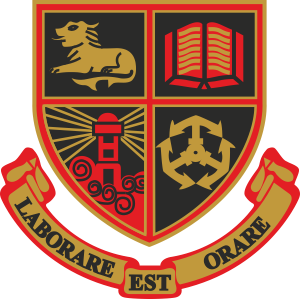
Sea Point High School, formerly Sea Point Boys High School, is a co-educational public high school in Main Road, Sea Point, Cape Town, South Africa. The school was established on 21 April 1884. In 1925, the senior grades were separated from the junior grades. In 1989, the school merged with Ellerslie Girls’ High School after becoming co-educational.
Sea Point Boys connected to Plunyan
 Source: kehilalinks.jewishgen.org/plunge/Home.html
Source: kehilalinks.jewishgen.org/plunge/Home.html















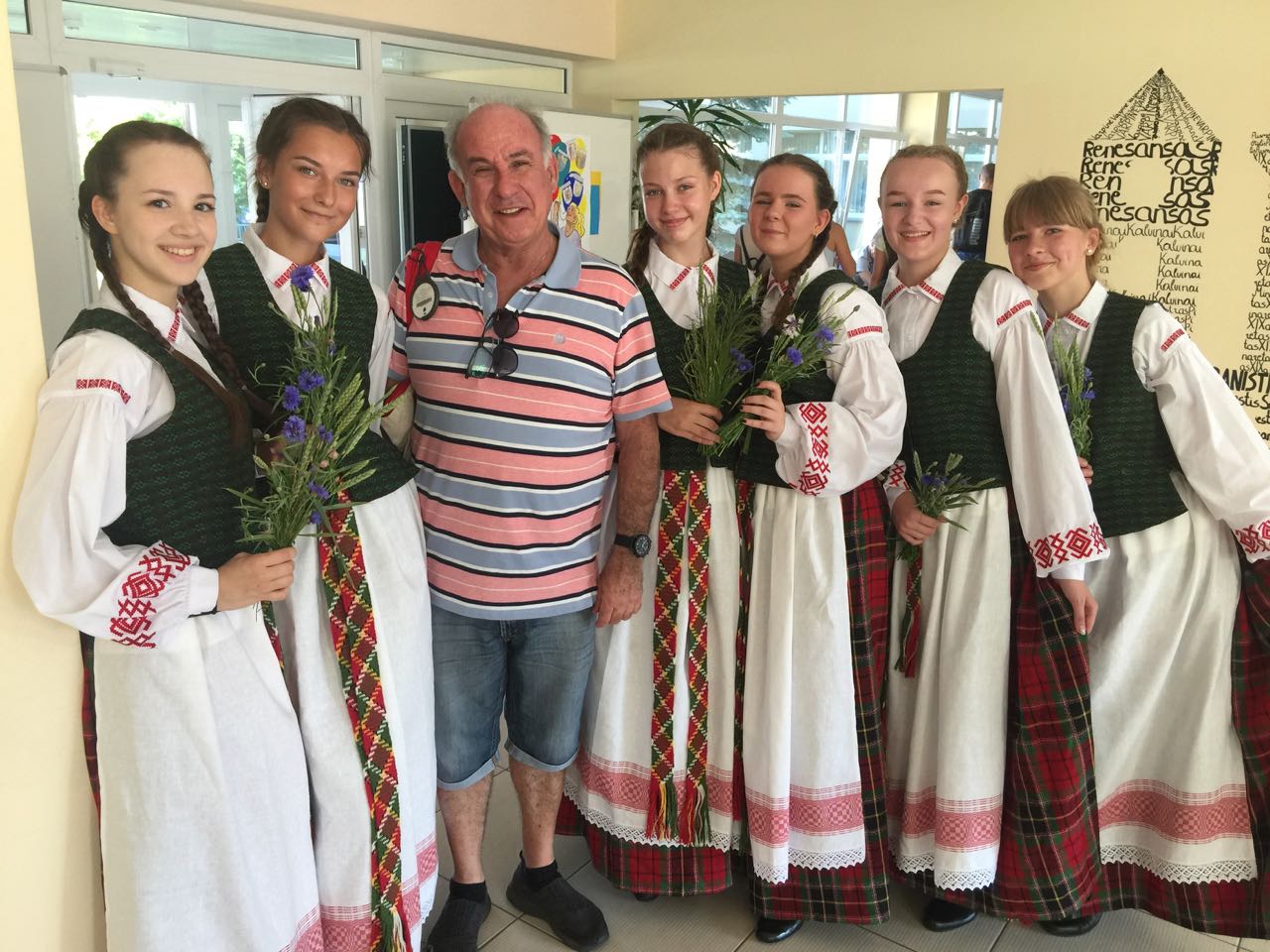
Atzalynas Gimnazija, Kedainiai Lithuania
Reflecting back to June 2019
Rabbi Dan Fink
Bobbie Lamont
Eli Rabinowitz
13 June 2019
VIDEO OF OUR EVENT IN LITHUANIA

For video, click here:
Source: www.youtube.com/watch?v=pZXBEuPfeFc
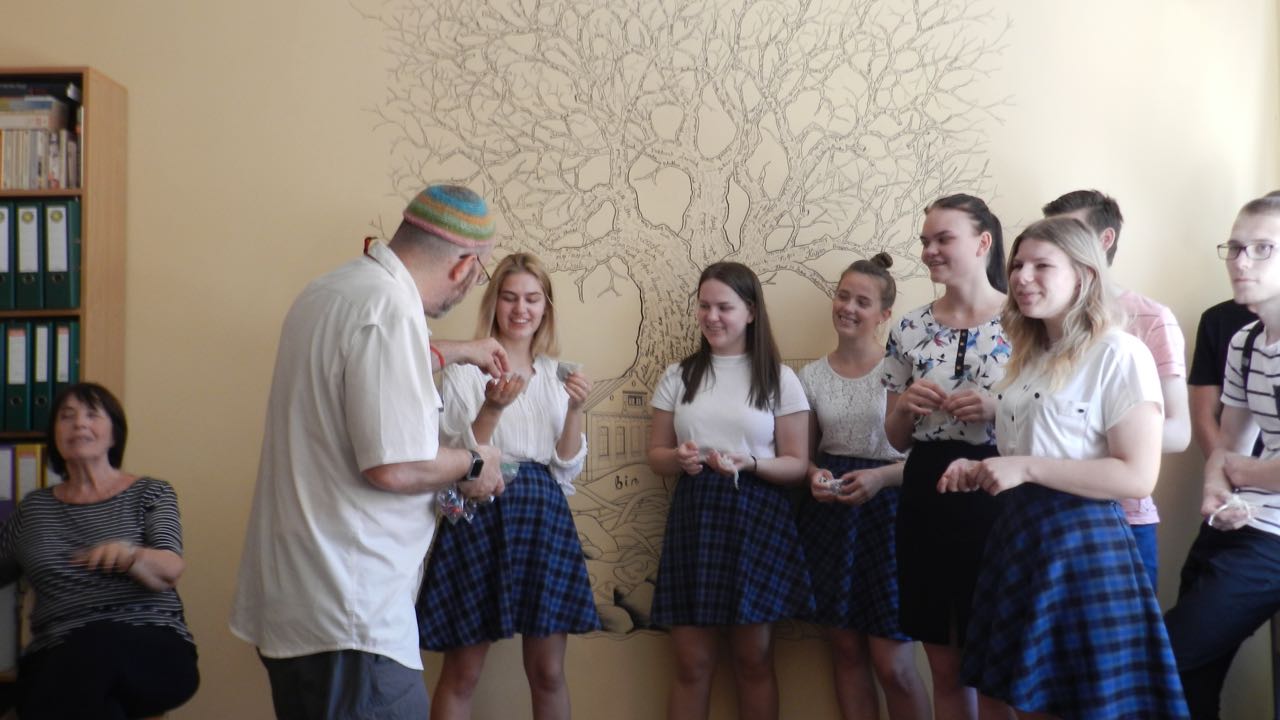
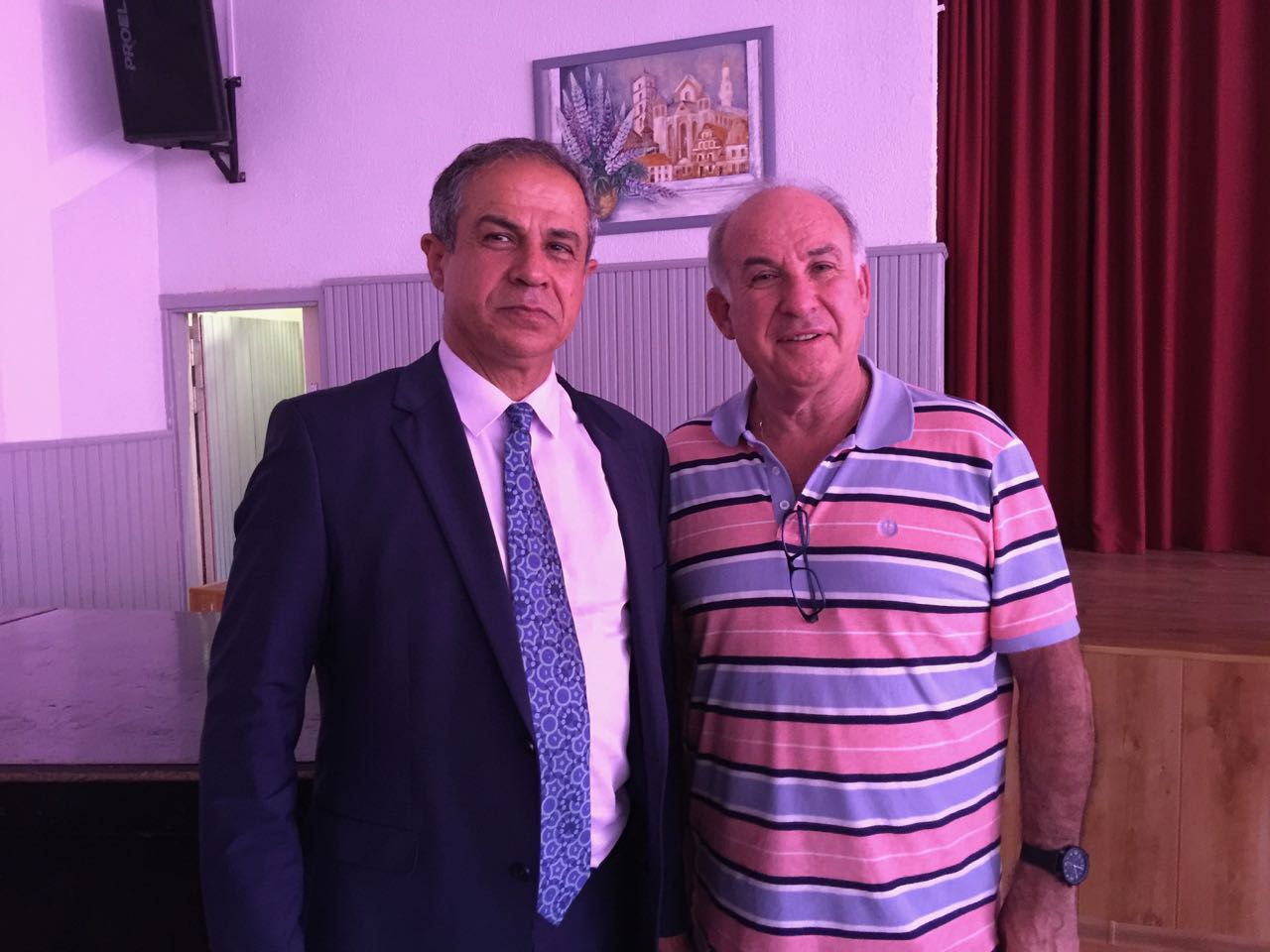
At the school
At the cemetery
At the Holocaust site
Vale Simonas Dovidavicius.
Standing between Laima Ardaviciene and me in Kėdainiai, Lithuania on 15 June this year. Simon passed away last week and was laid to rest on the 18th December 2019.
